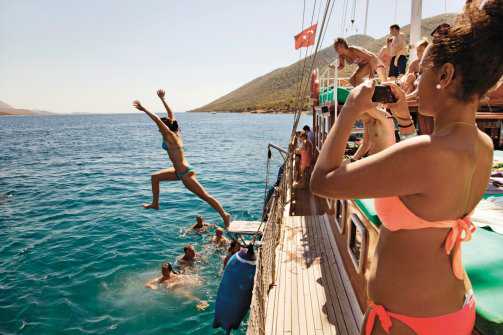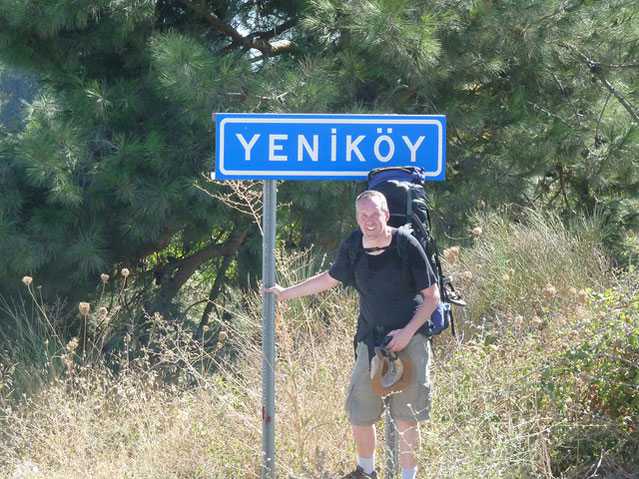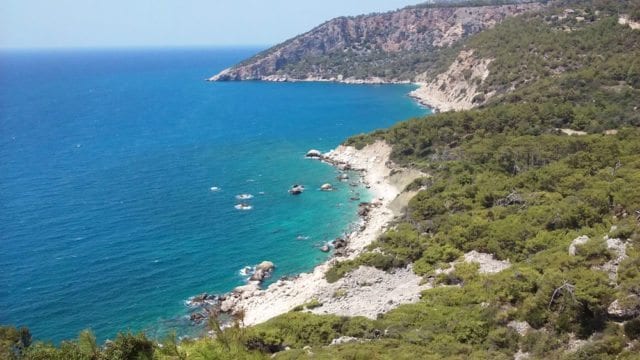
TRAVEL DIARY BY BÜLENT DOĞRUYOL:
DAY 1:
After a quiet night’s sleep followed by a wholesome Turkish breakfast we hopped on the Dolmus and told the driver to drop us off at the start of the Lycian trail. It was early in the morning. Since the skies were overcast (a rarity in late August Fethiye, albeit a boon for trekkers) and the minibus was sparsely filled, I asked the driver what the weather was going to be like today. With disbelief in his voice at my ‘absurd’ question he turned and shot back that only God would know the answer.
Once you get off the bus at the intersection of Ölüdeniz Road and Asagi Yasdam Road in Hisarönü, walk up Asagi Yasdam Road for about 500 m. to the start of Lycian trail, where a banner alerts you that you are at the head of the trail.
Tip: Try to catch a dinner at the Fethiye fish market before you hit the trail.
The paved road continues straight for appr. 1 km at the end of which keep left to pick up the unpaved footpath and you are on the Lycian trail. A resort hotel will be on your right.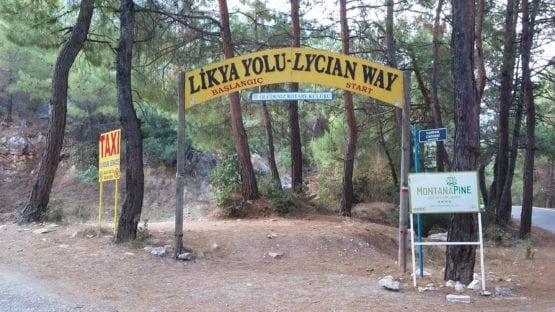
The ardors of the steep climb (for abou t 3.5 km) will be more than compensated by the stunning scenery of Ölüdeniz on your right. By the way, cameras or video equipment are highly recommended. We chat with a very trim and fit-looking retired couple in their mid-sixties who are returnig to Hisarönü from a brisk walk and looking forward to their much-deserved breakfast.
While the Mediterranen seascapes on the right take your breath away, the rugged mountain terrain on the left offers some almost other-worldly sights; precipitiously steep scars caused by rock/land slides, pine growth of beautifully varied colors, slopes cut by mountain streams into narrow lush green canyons, trees hanging onto life attached to perfectly vertical rock cliffs.
The trail levels off after 5 km. Next we arrive at the village of Kozagac, where we replenish our water with cold, clear natural spring water at the fountainhead and strike up a conversation with an 8-year old girl named Büsra. She is proud of her family’s goats and tells us eagerly how she loves to shepherd them. The relatively flat terraın in this region is heavily carved by intense floods caused by powerful runoff from the surrounding highlands. Lone islands of sandstone held by the roots of a single tree, rising and resisting the erosive force of the meandering creeks dot the landscape.
The trail continues with moderate difficulty marked by gentle up and downhill slopes until one reaches Kirme at km. 12, where there are 3 options for a gözleme break coupled with tea or ayran. These gözleme houses are Günbatimi, Sugar and Lemon Café. Although Sugar advertises heavily along the trail, it had a disappointing location and overall impression. Even though we opted for Lemon Café, I have to admit Günbatimi, offering a better scenery and ambiance, would be my first recommendation. Selma Hanim, the owner of Lemon Café, while treating us to her freshly made gözleme, tea and ayran, complained about the unfair advertising practices of her competitors, that they would destroy her roadside signs, undercut her prices and badmouth her. One can presume that the others might harbor similar feelings. These cafes are furnished with large and comfortable divans, cushions and pillows. They are a joy to stop in as one finds opportunities for good food as well as contact with fellow trekkers. We did exchange some tips with a young couple, which was camping along their way as we devoured the gözlemes.
It is imperative that one is careful not to miss the trail leaving Kirme (we did and lost 30 minutes). Going downhill make a sharp right at a dried up fountain (might carry water in season) after crossing a rundown gate (but conditions change over time). It is smooth downhill thereafter as you head to Faralya.
Shortly before Faralya the footpath merges with the paved main road, which skirts the access point to Butterfly Valley (Kelebekler Vadisi). This is a secluded bay accessible either by boat or by climbing down from the trail at this spot and does not harbor –unfortunately- butterflies anymore. It is popular with the young, hip, adventure-seeking and hitchhiking crowd. Camping is the preferred mode of stay. The 3 young hitchhikers (all college kids) we picked up on our way from Ankara to Fethiye were planning to attend a hippie music festival on this day in Kelebekler Vadisi.
Almost all Lycian Way trekkers skip the climb down to Butterfly Valley as it is quite treacherous and time consuming. Most visitors come to this pristine inlet via boat. A few meters up the road is Keyif Motel in Faralya; definitely worth a break to enjoy a strong cup of Turkish tea on their airy terrace overlooking the Butterfly Valley and the magnificent vistas it offers.
250 meter past Keyif Motel pick up the trail on the left hand side (right after Ottoman Gözleme Evi sign) and keep left onto the trail (ca. km. 19). Initially there will be a steep climb for about 1 km., which then levels off leading to a moderately difficult descent into Kabak village (km. 23). This part of the trail is mostly wooded offering a welcome respite from the hot sun.
With its elevated location high on the slopes, Mama’s Restaurant, where we stayed, is a hostel type guesthouse and restaurant, which is preferred by the same young, hip and intellectual crowd that can be found in Butterfly Valley. Its veranda overlooking the breath-taking panorama of the Kabak Bay is perfect for sunset drinks or dinner. While taking in the beautiful scenery with our well-deserved drinks, we had a lengthy discussion with an older British couple about Brexit (they were pro), immigration (they were against), skyrocketing cost of living in London and other issues. They owned property in the area, where they spend their summers and were at the restaurant for dinner.
DAY 2:
Before leaving Kabak a few words about the village. It is an exceedingly beautiful hamlet with picturesque and secluded coves and a well-known vacation spot for insiders. One might consider arriving there early to explore or even stay for an extra day or two. Even though Mama’s Restaurant is primarily a hostel (they also offer a few private rooms), the young college crowd one meets there is very intellectual (we discussed Harari’s Sapiens and Homo Deus with some of them) gentle, respectful and totally cool; they preferred to spend the nights on the beaches or crashed on the veranda (all beds were booked, yet overnight the rooms were empty). There are also full-fledged high-end hotels and spas in Kabak.
After a short breakfast table talk with Caner, one of the young owners (a graduate of Bosporus Univ.), about the risks and rewards of investment in tourism (next year he wants to get a sailboat and give sailing lessons to wealthy clients or move to Cambodia) we filled our water bottles at the fountain next to the hotel and broke for Alinca. At this point there are two routes to Bel, our destination for the day; the coastal path via Cennet Koyu or the Alinca route across the mountains. We were advised to skip the coastal walk due to steep, unsafe climb at the end of it. Moreover, 90% of hikers do head for Alinca.
Be forewarned, the 7 km. trek to Alinca is one of the more challenging parts of this walk (do not attempt late in the day). It starts with an arduous, long climb, which is rewarded by glorious views of Kabak Bay. The path becomes a roller coaster of up and downhill climbs trespassing an interchanging landscape of cliffy slopes, deep gorges cut by mountain streams, green, pristine valleys covered by a growth of pines, cypress, sandal trees, bushes, wild oregano, laurel, all of which makes this strenuous walk a sheer joy. Most of this stretch is under the shadow of trees. The slopes are scarred by fierce melt-water streams carrying huge boulders down-slope into the sea.
Before arriving in Alinca we encounter Marie & Sadik, two fellow travelers like us, but heading to Kabak in the opposite direction. Marie is from the Ukraine and Sadik from Istanbul. They are happy to learn that the rest of their path is downhill, which does not always mean a blessing (but more on this later). After sharing some of our high-calorie trail-food with them, Sadik and my hiking companion each allowed themselves a cigarette (go figure!).
Perched on the hills of Taurus Mountains, Alinca offers outstandingly beautiful views of Cennet Koyu, a secluded, azure-blue inlet in the Mediterranean. A break was in order and we walked into a café named Catchy. An old lady met us with a warm smile and offered tea and ayran. We needed both. The sight of the blue sea from her terrace plus the beverages were simply rejuvenating. Since she told us how this place would be full of campers in season, it would be in order to say a few words about the timing of this walk.
Ideally, one would undertake this hike in Spring (March, April, May) or Fall (Late September, October, November) when the water is abundant, flowers more colorful and fragrant, temperatures more temperate. This is one reason why we did not e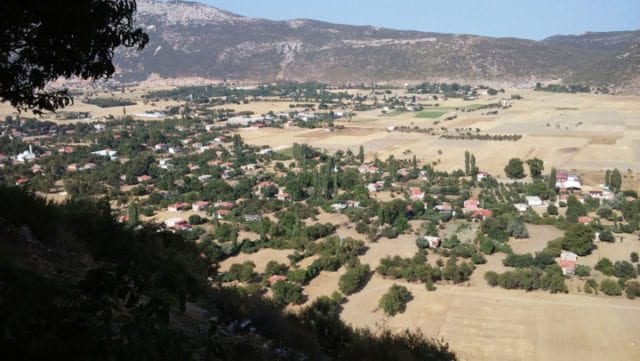 ncounter many travelers on the trail. But, in real life, not everything falls into place as one wishes all the time.
ncounter many travelers on the trail. But, in real life, not everything falls into place as one wishes all the time.
Back on the trail again, we promptly lost it and struggled for about an hour. Better keep on the paved asphalt road for 1.5 km. and take the new Gey trail on the right (marked). Not all locals are well informed about which way the trail goes. Many of them have never been on it. Do not trust everyone giving directions. The trail is mostly well-marked by red/blue stripes painted on rocks, boulders, trees, poles, fences, etc. every so often (ca. 10 mt.). Sometimes, especially in open areas and clearings, one has to search for these signs. A large red X means that you are headed in the wrong direction, which saves time and more importantly precious energy. Good job Kate Clow! (she sends out markers to maintain the trails).
Appr. 5 km. past Alinca you come to a fork, one going to Bel via Bogazici and Sidyma, the other via Gey. We opted to go via Gey, about 5 km. This is a clearly marked trail of low or moderate difficulty; last 3 km. is on paved roads. Once more, we were treated to amazingly beautiful scenery of pristine inlets with rolling green, pine-covered hills into the Mediterranean. On the flat stretches where fields were being cultivated agriculturally one can see an occasional cistern to store water in rainy season to be used in summer months.
In Gey we took another break next to a farm with cows, goats and a donkey keeping us company, before breaking for the last leg of our trek to Bel, ca. 6 km. Water is obviously the most precious commodity during such a hike, but there is ample opportunity to replenish. Thus a 2 or 3 lt. bottle would be sufficient.
After a steep climb with more vistas of stunning beauty we arrived in Bel. Bel is a very small village of 20-25 dwellings. Fatma Abla’s Pansiyon is the only game in town. She and her husband Osman offer a basic dinner, 5-6 rooms with private shower and bathroom and a hearty breakfast for a decent price, which is all one needs and thankful for. Rooms are clean although water pressure in the shower is feeble; there is no wi-fi, erratic phone service, but maybe that is a blessing. Beer is available.
Such stays are welcome chances for social interaction with people of different regions. Sometimes other villagers stop by to chat with visitors and break their routine. We learn about the bickering, jealousy among them, how some are planning competing guesthouses like Fatma’s, how she had been reported to the tax collector’s office and had been cited for violations related to running a business. All issues much too commonly seen in a budding business environment.
DAY 3:
Since the village people are early risers the two of us took advantage of it and ate a relatively early breakfast with local ingredients. It is advisable to get an early start during such walks so that one gets to the final destination early enough to explore the surroundings there; because they almost always have exciting things to discover, i.e. beaches, historic sites, caves, etc. (not to mention avoid being on the trail after darkness sets in). Considering the moderate difficulty level of the Lycian Way and assuming a daily average of 20 km. (for amateur hikers like me), one should be able to tackle it within 7-8 hours (average 3 km. per hour).
The first 4-5 km. was easy terrain under the shade of tall trees, a real treat. Little did we know that this was a prelude to a daunting test of our stamina. Then followed a deviously high gradient descent. It took us almost 5 hours to negotiate a hair-raisingly steep slope of less than 2 km. The terrain consisted of rocks overgrown with spots of typical Mediterranean bushes (maki). Do not attempt this in wet weather since the rock surfaces will be treacherously slippery. Watch out for loose rocks. Things can get precarious in a heartbeat if you loose concentration. This is one occasion where I was thankful to have walking sticks with me.
A few words about the equipment would be in order here. Some participants opt to hit the trail without any hiking poles or with only one pole. I strongly suggest that you use both sticks. Even on even terrain I found them to help me glide faster and with less effort. Since the trail provides ample opportunity for water and accommodation, unless one is a camping aficionado, pack light. Good grade hiking shoes with hard soles are a must (preferably ½ or 1 size larger than normal size), UV grade hat (in summer) is good. I found that in summer long pants are not necessary (bushes are tolerable and no bug problems). T-shirts, shorts, socks and one warm sweatshirt for cooler nights on higher plateaus is all one needs. Food is also plenty available in villages and towns one crosses. No need to carry any.
You will get blisters on your toes or soles; soothing or anti-inflammatory ointment might be helpful. I learned to live with them.
The upside of this sharp, tricky slope was that it overlooked and rolled into another one of these unspoiled, deep blue coves of breathtaking beauty. In the distance one could spot and hear mountain goats gazing at us.
This is the only spot where water supply is scarce. After the sharp descent the trail levels off and after a few km. runs into a small collection of disorganized houses named Gavuragili. Although there are 2 guesthouses, they were closed since August was low season. Having depleted our water supply during the infamous descent, we were desperate for water and knocked on a few doors to no avail. Almost panicky we finally arrived at a construction site for a large modern building and gained access by unlocking the main gate. Gathering all the calmness we could muster to allay a menacing Kangal suddenly appearing in front of us, we heard the saving calls of the attendant.
He graciously offered to help, supplied us with water and even offered hot tea. It turns out this place did not have any water supply of its own which was hauled from nearby towns. He recounted to us how he encountered exhausted tourists, hallucinating and near collapse due to dehydration. Even cases where he had to collect unconscious hikers, domestic and foreign, from the trails in the dark who had lost orientation.
From here on it is mostly flat terrain and the trail mostly merges with or follows paved main roads. The area is teeming with ruins from antiquity, Pydnai, Letoon and Xanthos are all in this region, greater Kumluova coastal plains formed by the deltas of Esen (Xanthos), Özlen and other smaller rivers all emptying into the Mediterranean Sea. Mineral rich deposits of these rivers have pushed the original Lycian coastline into Mediterranean by several km. creating a rich agricultural delta where greenhouses dominate the flat landscape.
We checked into Özlen Pansiyon. This is a larger guesthouse with a full-scale restaurant located on a scenic creek (Özlen). The owner, Hasan Balaban, is a jovial, gregarious, but also street-smart person always after maximizing his profit. Do not eat fish there and if you need alcohol, stick with beer. The rooms are clean and the ambiance is pleasant.
Hasan Bey offered to drive us to the ancient ruins of Letoon and Xanthos, which we accepted, since these areas are all urbanized and trails use the main roads. Of the two locations, Xanthos is the more interesting one and served as the capital of the Lycians. The ruins are mostly from the Roman times, built on top or the side of existing Greek structures and there is very little left of the original Lycian civilization.
DAY 4:
Again, due to the flat and urban nature of the region we transferred to Cavdir by car and picked up our trail at the Cavdir Municipal Cemetery. It runs right through the cemetery. The trail overlooks the Kumova (Letoon) coastal plain, which is almost totally covered by greenhouses interspaced by open green areas; a sea of off-white/gray greenhouse roofs. Lycian Way arcs 180 degrees around this delta from one end of Patara Beach to the other end. Patara Beach, from Karadere to Gelemis, is one of the longest and most beautiful beaches in the entire world.
The mountains on the left offer modest height and variation. The trail is poorly marked at some critical spots and one is hard pressed to remain on the right track. This happens when it has to negotiate its way around private properties, such as fields or orchards and one has to pan out right or l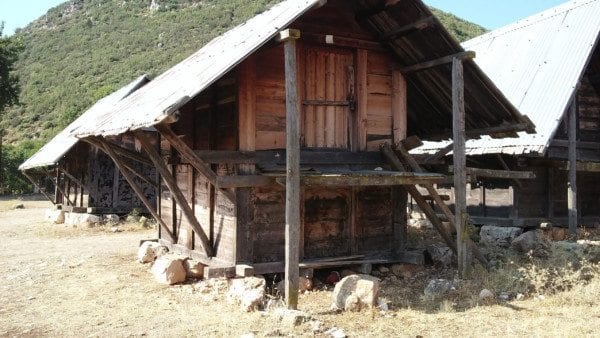 eft to search for it. It is of low to modest difficulty merging with paved vehicle roads on occasion. Low growth bushes and olive groves dot the landscape. There is little shade in this section.
eft to search for it. It is of low to modest difficulty merging with paved vehicle roads on occasion. Low growth bushes and olive groves dot the landscape. There is little shade in this section.
This is the only part where long pants or tights might come handy lest one risks scratches or bruises below knee level due to thorny bushes and flexing branches. This should not pose serious problems for sturdy tough guys, but ladies concerned with their beach appearance should take notice, because today’s trek ends at the beach.
There is ample opportunity to fresh water in Üzümlü (Inpinar) with its cold clean mountain water. Before Üzümlü a family on the outskirts of the village offered us tea and refreshments with some delicious gözleme. An extended chat with several members gave us insights into their lives where younger members strived to leave for bigger cities whereas older members labored to support the family through agriculture.
Üzümlü is a large village with well-stocked markets and pide joints. There are several guesthouses as well. From Üzümlü to Akbel it is a relatively easy hike, again, dominated by the Kumluova plain and large expanses of the Mediterranean Sea. On the left, the mountain landscape has a relatively tame and eroded look. By the way, the geology of the entire Lycian Way is dominated by calcium carbonate based limestone. The climbs and descents of this segment are mild and manageable.
Since our plan was to explore Patara Beach area a bit more, we booked our rooms in Gelemis at Neptun Pansiyon. The owner Fatma Hanim picked us up in Akbel for a short ride to Gelemis. Perched at the top of a hill overlooking the town and the sea, Neptun Pansiyon is the place to stay in Gelemis. The air is clean, sunsets are beautiful, her homemade food is delicious, the rooms are clean, wi-fi is available, and everything one needs for a pleasant stay is there.
We were able to see the ancient Patara ruins, stroll to the beach where Carretta turtles are cared for. Above all we were treated to one of the most fascinating shows of nature. We climbed up to the top of Kumlutepe, a high sand bank on the outskirts of the beach, where tons of mostly foreign visitors settled in to watch a once in a lifetime sunset. This is another spot on the trail where one could contemplate staying an extra day or two to enjoy the beach and entertainment the area has to offer. Besides the town of Gelemis, Kalkan, which is a major tourist destination, is also nearby.
Since this part of the trail lacks spectacular vistas, for visitors who are more inclined to explore historic sites and enjoy beaches, it might be preferable to transfer at the end of day 3 (skip Özlen Pansiyon) from Letoon/Xanthos area directly to Gelemis/Kalkan for a stay at Neptun Pansiyon
DAY 5:
Following another hearty breakfast with wonderful scenery Fatma Hanim dropped us off in Bezirgan, where we picked up the trail. Bezirgan is a pretty village with old, but well maintained, pretty stone houses. On the west edge of the village one can visit the collection of grain storage houses. These are small, 2-story wooden shacks designed to keep the vermin away from wheat and the concept goes back to Roman days (emperor Hadrian). The village with neat houses is located within a flat basin plain high above sea level surrounded by Taurus Mountains.
At the top of a nearby hill overlooking the village we met Ali Riza Bey, an older gentleman passing his time in a small, cool rest area that he designed and created years ago. It features flower beets, a fountainhead that delivers sweet spring water from the highlands, several tall trees providing much needed shade; in short an oasis on the otherwise treeless environment. He talks about this little park as his life’s work in spiritual terms providing comfort to passers by and thus finding serenity for his soul. He is a man that the world needs more of.
After a moderate descent one arrives at the outskirts of Saribelen; 7 km. between Bezirgan and Saribelen. We pick up the trail in Saribelen, but promptly experience difficulty following it, since again the markings are erratic. Saribelen is a green hamlet seated on the slopes of a hill and while walking downhill through it, we were flagged by Dursun Bey, who asked us to sit with him for a few minutes. It turns out that we both knew someone with whom he served time in prison many years ago. He said it was a dumb youthful mistake that landed him there. Once again, my hiking companion and Dursun Bey shared the joy! of smoking.
We hit the trail to Gökceören (13 km. from Saribelen), which was our destination for the day. Now we were trespassing high plateaus with other-worldly rock formations, some of which reminded me of the alien planets in Startrek episodes. At this point a small hint might be useful. I observe hikers who keep walking for extended periods only looking down on the path. Resist the feeling of putting your head down and staring at the trail for minutes on at a time. Instead, frequently, take time to survey the surroundings and take in the vistas.
This was easy terrain with mild undulations , some bushes and occasional goat herds. We searched unsuccessfully for attending shepherds, but later learned that nomads (Yörük) and semi-settled nearby villagers leave the herds for weeks unattended to graze. We were thankful that there were also no dogs herding and guarding the flocks, except for one occasion where one started to charge us, but discouraged by our yelling and standing firm. He nevertheless followed us for a while until he was sure we posed no danger for the herd.
At about km. 9 a small oasis in the middle of this flat basin (Saribelen Yaylasi) popped up surrounded by fig trees and featuring a water-well under a huge oak tree; even buckets were provided. Despite fears of contagions (we joked about whose immune system is more robust), we could not resist drawing water from the well and quenching our thirst with it. It was sweet, fresh and cold. We kept munching on definitely organic, fresh, fragrant and sweet figs picked right from the trees.
Appr. 2 km. further we came across a Yurt, a nomadic dwelling, a mixture of tent and wooden shack, where the owner of the house, Samiye Hanim, invited us in. She offered us a much welcome break featuring cold ayran with herbs (otlu yörük ayrani), fresh figs, and watermelon. She told us stories of foreign tourists visiting her home, showed picture after picture of group photos taken with visitors from all over the world; Australia, Canada, the US, UK, Japan, most European countries. Many mailed these photos with notes to her after their return to their home countries. There were engineers, chief physicians of hospitals, president of the top Swiss administrative court, and many other accomplished people. It was an amazing experience to listen to her.
She also put us at ease by mentioning that they also get their water from the well we had just visited. As this part of the trek was on a flat plateau, we asked her why they were not cultivating the land. It was impossible due to destructive nightly activities of wild pigs. One can observe traces of their presence along the entire Lycian Way.
The last portion of this trail was dominated by exceptionally beautiful sights of the Mediterranean coastline near Kas, dotted by green islands, small and big. These almost never ending vistas take one’s breath away.
2-3 km. before Gökceören there seem to be remnants of ancient (Lycian?) settlements destroyed presumably by earthquakes. They are not directly on the trail, but only a few meters left of the trail. This area holds great promise for any future archeological exploration. Again, the hike is an easy one on flat terrain with rare occasional trees. There were a few cartographers surveying the land from my hometown Denizli. Another excuse for a short break.
A final descent took us to Gökceören, a relatively well-to-do village, whose inhabitants sold their plots along the Kas coastline to developers. This income enabled the them to build neatly designed, modern houses with cars in the driveways.
The only accommodation in this village is run by a shady character, who engages in price gouging (heard from other sources and experienced myself). Very basic food, no wi-fi, sporadic phone service (only one operator), insufficient water pressure for shower, no water to flush toilet in the morning. Make sure to agree on pricing of meals and accommodation ahead of time. There might be a recent competitor guesthouse to him.
Bülent Dogruyol, Brooklyn, NY

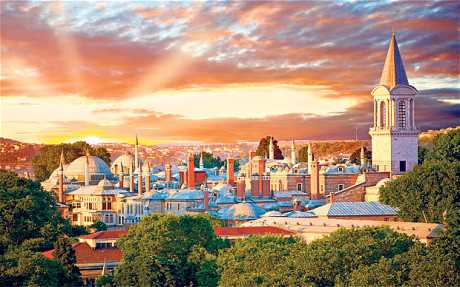
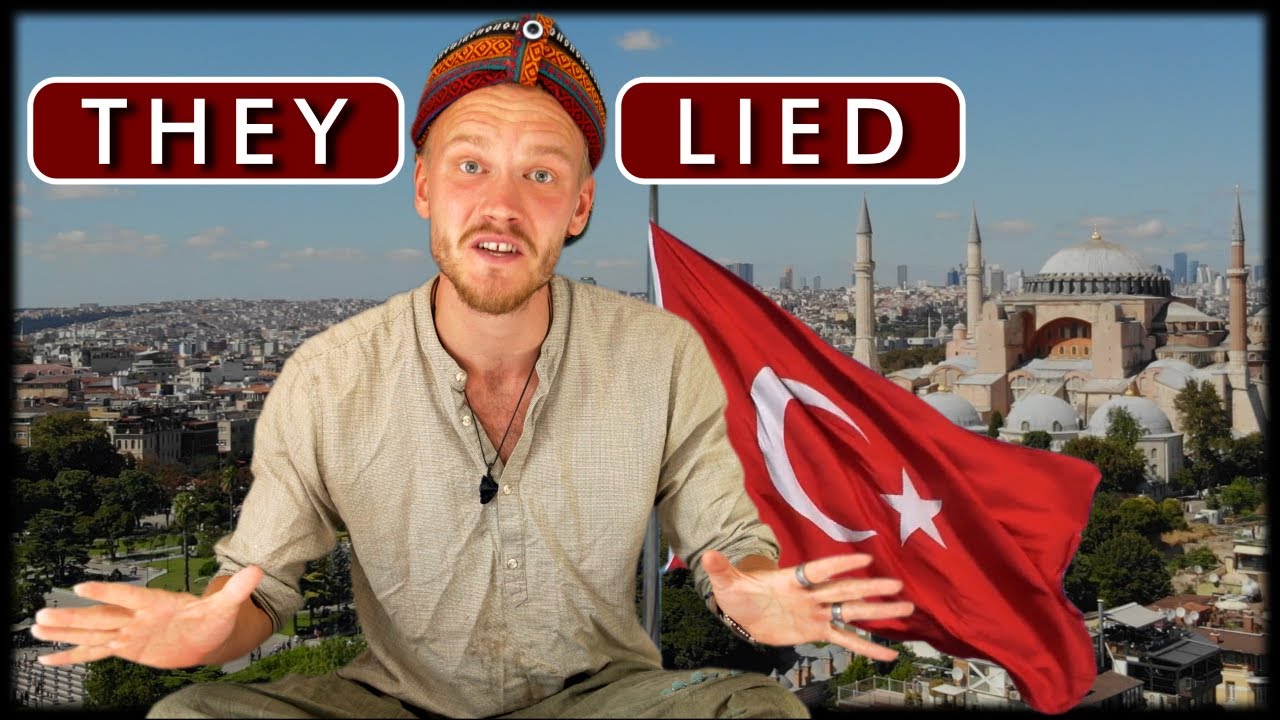



 ncounter many travelers on the trail. But, in real life, not everything falls into place as one wishes all the time.
ncounter many travelers on the trail. But, in real life, not everything falls into place as one wishes all the time. eft to search for it. It is of low to modest difficulty merging with paved vehicle roads on occasion. Low growth bushes and olive groves dot the landscape. There is little shade in this section.
eft to search for it. It is of low to modest difficulty merging with paved vehicle roads on occasion. Low growth bushes and olive groves dot the landscape. There is little shade in this section.